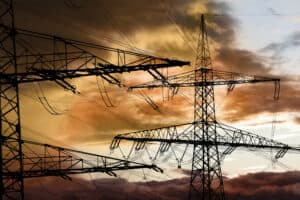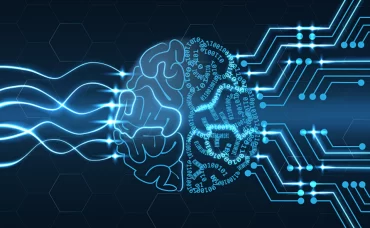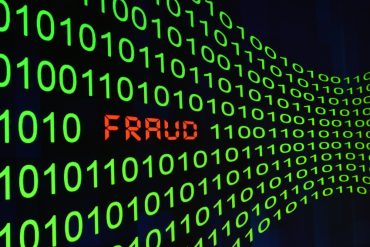
Utility companies must continuously monitor the power grid for cyber threats, collect cyber data in real time, and leverage next-gen, artificial intelligence-based cybersecurity.
Recent cold snaps are a sober reminder to the U.S. energy sector that a full-blown winter is here. Unfortunately, the expected increase in residential energy usage could potentially create a higher security threat environment for the nation. There are a handful of things people can do to take personal measures to eliminate risks, but utility companies have a substantial responsibility to keep the power grid and the communities they serve safe by maintaining power and ensuring their security. This means taking an aggressive approach to mitigate the risk of a cyberattack that could give hackers access to the personal data of its customers.
Hackers on the prowl
In 2021 Texas experienced the record-breaking Winter Storm Uri, which caused at least 80% of the state to be blanketed by snow. Unprepared for the severe storm, it created an unstable power grid that left 20 million Texans without electricity. The event left utilities across the state in a highly vulnerable position – straining the power grid to the extreme. It’s times like this when customers are acutely at risk of their information being hacked. To add insult to injury, material shortages are affecting supply chains that deliver critical services and goods that provide populations with reliable and safe energy. Naturally, there were product interruptions as the demand exceeded the available supply. This can put a strain on the daily supplies that utility companies rely on, and that can leave a team spread thin while working with fewer resources.
Weather and supply chain issues are certainly not the only threats that can put the power grid and customers at risk. Just last year, the result of a ransomware attack on the Colonial Pipeline Company was deemed a national security threat and declared a state of emergency. The system – a 5,500-mile-long pipeline that carries 3 million barrels of fuel between Texas and New York each day – was forced to shut down for several days following the attack, causing major disruptions. Just a few short years ago, fraudulent emails that looked like they came from the National Council of Examiners caused a malware attack on the utility sector. It was organized by hackers who executed an attack that contained malicious macros. In these two instances, the information of customers everywhere was put at risk.
Vulnerabilities
Clearly, there are multiple vulnerabilities power utilities can face daily, and no company is immune to them. This can be incredibly problematic because when there is a disruption to the power grid’s operations, there is an abundance of damage it can bring to customers. Unfortunately, this is even more so the case for smaller, more vulnerable electricity providers. Not only can it pose dangers for consumers, but it can directly impact the economy. Knowing this, there’s no question that protecting the energy is of paramount importance. The problem is that current software and protocols just aren’t sufficient to protect critical energy infrastructure. To best safeguard, the power grid and the populations it serves, utilities must make a move now and upgrade to next-gen cybersecurity solutions.
The first step in ensuring the safety of utility companies and their customers is to eliminate risks anywhere they are possible. Unfortunately, this isn’t always a possibility when using antiquated platforms. For example, when there are supply chain issues, utilities face more vulnerabilities to malware attacks. This is because when an organization is facing this issue, they often must carry on providing services with less-than-ideal equipment and a reduced support team. In a cybersecurity intelligence report, it was shown that human error is what leads to 95% of cybersecurity breaches. When support teams are working with fewer than needed people, there just isn’t enough manpower to focus on all cybersecurity threats. In this situation, an end-to-end cybersecurity platform covers the gaps and provides the extra necessary support.
See also: IoT Security Solutions for Critical Infrastructure
Locking the cyberdoors
Securely locking all the cyber doors is absolutely crucial for minimizing safety risks, and a next-gen artificial intelligence-fueled cybersecurity platform does it in a holistic way. It gives power utility companies the space to build successful and dependable cybersecurity programs that not only acknowledge and protect critical assets but do so while complying with federal regulations. This kind of solution includes the monitoring of cyber threats, collecting cyber data in real-time, managing irreproachable critical infrastructure protection, and audit readiness.
It’s important to note that this kind of cloud-based managed security service is specifically designed for utilities – providing nonstop cyber threat awareness and complete remediate guidance. Cybersecurity information from a utility environment can be overwhelming, but this service presents the data in a clear and intuitive way so that managers can easily respond to and stay ahead of threats. It deciphers and provides alerts if there is any detection of malware, viruses, or any other type of cybersecurity threat. These alerts can be set to optimal thresholds for any organization, which enables them to efficiently balance workloads with proper threat mitigation. Plus, customizable environments allow managers to view data in a way that makes sense for them—provided in a way that makes it easy for anyone to analyze. Additionally, at any time, a thorough evaluation can be run on servers, control systems, and any connected device. This is all designed to get managers accurate and timely information that can improve any decision-making.
Securing the safety of customers
This winter is one that’s expected to bring storms with snow, ice, sleet, and freezing rain in many areas. When the power grid is at risk, so is the security of customers everywhere. Securing our energy source now is an absolute necessity. No one wants to face the cold without lights or heat, and no one wants their information at risk. With hackers waiting in the shadows around the clock, ready to take advantage of any vulnerability, it is imperative that utility managers stay vigilant in protecting their customers. An end-to-end cybersecurity solution will guarantee that no matter what kind of threat a utility faces, customer information will always be secure.




























